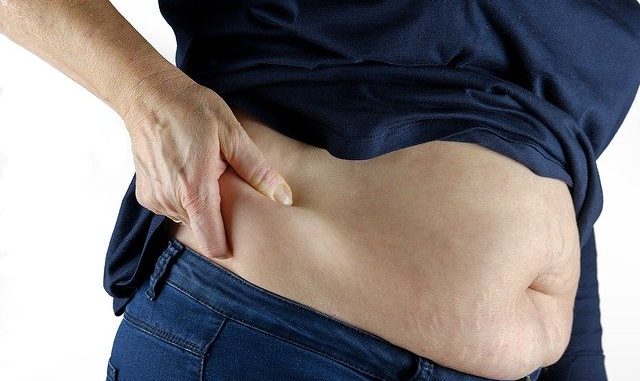
Visceral fat is no laughing matter. It may look funny when we jiggle a fat belly and there are rolls of fat exposed around the midriff. For nutritionists these pieces of skin which we can grab with the hands are really problematic especially when it comes to general health and fitness.
Something like 35% of us have high visceral fat levels.
Visceral fat (abdominable fat) is excess fat around the belly. Its presence is a risk factor for heart (cardiovascular) disease. The visual effects are probably very obvious but other measures to consider would be the Body mass Index (BMI). If you have a figure over 25 or over 30 kg/metre2 then you are considered overweight or obese in that order.
A BMI is calculated as your weight in kilogrammes divided by your height in metres squared (kg/m2). The BMI value defines people as overweight as in pre-obese when their BMI is between 25 to 30 kg/m2, and obese when it is greater than 30 kg/m2.
High BMI values are not only a risk factor for cardiovascular disease but a host of other conditions too such as cancer, stroke, diabetes, arthritis, erectile dysfunction and kidney damage. That is not all of them but enough for us to consider doing something about a high BMI that indicates a decreased life expectancy.
Visceral fat also triggers various inflammatory responses associated with premature aging as well as disease. There is an association with reduced cognitive functioning which means dementias and other brain diseases can set in.
Recent research though has shown for example that eating avocado may be at the heart of at reducing visceral fat and this reducing the risk of heart disease.
Researchers from the USA at the University of Colorado Health Sciences Center have published an observational study on levels in people of visceral fat. Over five years, they examined 1,100 adults.
Measurements on visceral fat were made using abdominal CT scanning which is a sophisticated method of examining the fat levels around the belly. To help with the measurements the subjects completed food frequency questionnaires over a year.
The Results
The study showed some clear benefits of eating soluble fibre. For every 10 gram increase in the intake of soluble fibre, there was a decrease in visceral fat by 3.7 per cent. The study indicates that foods rich in soluble fibre like pectin, alginates etc. will help in reducing belly fat.
Foods That help Fight Belly Fat
Various foods should be considered especially if they have a high soluble fibre content. Think about avocados for a start !
The avocado has long been touted for its ability to pack a punch in terms of mineral, vitamins and soluble fibre content. The soluble fibre content is key here.
One reasonably small-scale study showed that consuming this ‘fruit’ helped reduce visceral fat (Khan et al., 2019). In this study, 111 adults were randomized into two groups. The first group ate a fresh avocado as part of their daily meal whilst the second group, the control group ate the same number of calories but no avocado. After three months of this diet, those eating avocado were shown to have reduced their visceral belly fat. This was not observed in the control group who did not eat avocado.
References
Khan, N., Edwards, C., Thompson, S., Burke, S., Walk, A., Reeser, G., Burd, N., & Holscher, H. (2019). Effects of Avocado Consumption on Abdominal Adiposity and Glucose Tolerance: Findings from the Persea Americana for Total Health (PATH) Randomized Controlled Trial (P21-005-19). Current Developments in Nutrition, 3(Suppl 1), nzz041.P21-005-19. (Article).



Leave a Reply